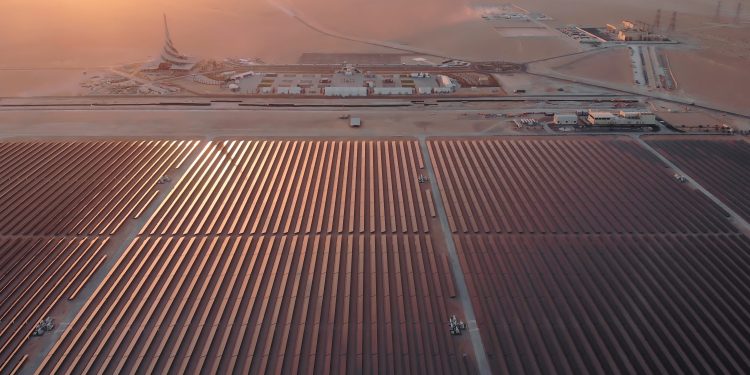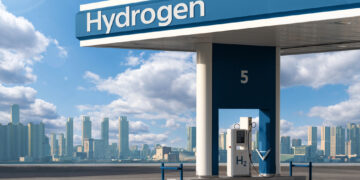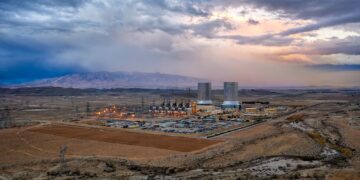The Middle East and North Africa (MENA) region is experiencing a significant expansion in the renewable energy sector, outpacing global growth due to its current modest base and the bold energy targets set for 2030.
According to the International Energy Agency, the region is on course to expand its renewable energy capacity by 4.5 times from its 2022 levels, with Saudi Arabia, Egypt, and Algeria spearheading this growth.
“The MENA region, which is responsible for less than 8 percent of global emissions from power and heat production, is poised to unlock its vast renewable energy potential. From less than 50 gigawatts in 2022, the region aims to skyrocket to 200 GW by the end of the decade,” the agency stated.
The report highlights that a significant portion of this expansion is concentrated in Saudi Arabia, Egypt, Algeria, and Israel.
Saudi Arabia leading from the front
The report praises Saudi Arabia’s pivotal role in the renewable energy transition, with the kingdom’s goal to reach 59 GW by 2030, a substantial increase from its initial 2016 target of 9.3 GW. This ambition aligns with Saudi Arabia’s strategy to achieve net-zero emissions by 2060.
Algeria has set its sights on installing a minimum of 14 GW of solar and 5 GW of wind power by 2030, while Egypt is aiming for 37 GW of renewable power by the decade’s end.
Almost half of the region’s 2030 renewable capacity goals are comprised of solar photovoltaic (PV) installations. The IEA underlines that if the region’s plans come to fruition, solar PV capacity could leap from 16.5 GW in 2022 to over 90 GW by 2030, buoyed by the area’s high solar irradiance and the increasing cost-competitiveness of solar PV technology.
Clean energy transition progressing steadily
The analysis suggests a pivotal window of opportunity for countries to devise clear strategies that bolster renewable power, aligning with the UN Climate Change Conference’s objective to triple global capacity by 2030.
Emphasizing that realizing a threefold increase in clean energy sources by 2030 is feasible with the right governmental policies, the IEA’s executive director comments on the ambitious but attainable nature of these targets.
“By delivering on the commitments made at COP28, including tripling renewables and doubling energy efficiency by 2030, nations have a significant chance to advance toward a more secure and sustainable energy future,”
he remarked.
- Shuaibah Two (2) Solar Facility: Mecca Province, Saudi Arabia – 2.06 GW by 2030
- Gulf of Suez Wind Power Project: Egypt – 1.10 GW by 2026
- Al-Ajban solar park: Abu Dhabi, UAE – 1.5 GW by 2026
- Mohammed bin Rashid Al Maktoum Solar Park: Dubai, UAE – 5 GW by 2030
- NEOM Green Hydrogen Project: NEOM, Saudi Arabia – 600 tonnes per day of green hydrogen by 2026
Sharp price drop in renewable energy technologies
The energy think tank draws attention to the increasing shift toward renewable sources like solar PV and wind, propelled by the dramatic decrease in costs over the past ten years and renewed government initiatives to develop resilient, low-emission energy systems.
Since the Paris Agreement in 2015, the global annual increase in renewable capacity has tripled. In 2023, renewable capacity additions worldwide reached almost 560 GW, marking a 64 percent increase from the previous year, with China as the biggest contributor.
The transition to clean energy, however, is not without its challenges, such as protracted project permit processes, insufficient grid infrastructure investment, and elevated financing costs, particularly in emerging markets.
The IEA advises governments to undertake targeted actions to surmount these hurdles, suggesting measures to lower financing costs and enhance the bankability of renewable projects, including improved policy visibility and support for early-stage project development.
Moreover, the IEA’s reports indicate that the accelerated deployment of clean technologies can lead to more affordable energy while also creating new industrial and job opportunities, thereby strengthening the global economy.
Ensuring a reliable and varied supply of minerals critical for the energy transition is deemed essential to meet net-zero objectives. The market for key energy transition minerals is expected to balloon to $770 billion by 2040, the report concludes.









